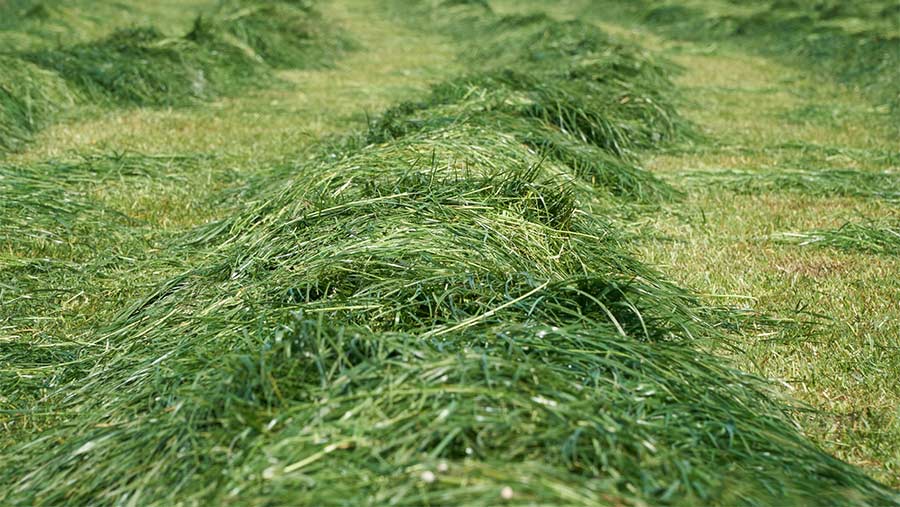Deadly brown clouds prompt forage testing reminder
 © Veltman34/Adobe Stock
© Veltman34/Adobe Stock Silage producers are being reminded of the continued importance of grass sampling for nitrate levels before silage cutting after a worrying rise in reports of brown gas from clamps.
Yellowish and brown fumes emanating from silage clamps are likely to be nitrogen dioxide – the gas formed when nitric acid reacts with water – farmers have been told.
See also: Avoid nitrate deaths by testing first-cut grass
Contact with this gas can cause skin and eye irritation, bronchitis, stripping the enamel from teeth – even death.
Gases usually dissipate after a day or two, after which point the site becomes safe again.
Forage advisers believe the slow, cold spring may have caused the issue this year.
The problem is more associated with first cut, but can be seen in every cut through the summer, depending on weather conditions and nitrogen uptake, says silage specialist Dr Dave Davies of Silage Solutions.
Any farm staff should report the sight of brown or yellow gases around silage clamps to farm and herd managers.
If exposed to the gas, people should seek guidance from their GP or contact NHS 111.
How to avoid nitric acid risk
- Test grass and forage samples before harvesting
- First cut sometimes presents a problem but the issue could be seen in every cut through the summer, depending on weather conditions and nitrogen uptake
- Delay cutting if nitrate levels are too high and re-test
- Crude protein samples over 18% and nitrates above 0.25% freshweight could lead to fermentation problems and be a health risk to staff and livestock
- Nitrates at about 0.15-0.25% could still be problematic for fermentation
Source: Dr Dave Davies, Silage Solutions
Potentially life-threatening
Ruminant technical manager at KW Feeds, Charlotte Ward, said that if these reports of yellow/brown gas were nitrous oxide, the impact could potentially be life-threatening to people and animals.
“It is important to note that nitrous oxide forms naturally when nitrates are broken down immediately after ensiling.
“We suspect the higher nitrate content in silage, due to the slow cold spring, may be exacerbating the situation. These are conditions we are not used to,” she said.
“We advise to exercise extreme caution if there is even a slight indication that this is occurring.
“Do not breathe in near the areas where the gas is visible, or suspected. Tell-tale signs can include silage discolouration, often turning to a bright yellow-orange colour.
“This highlights the importance of taking pre-cut samples and sending for analysis to determine nitrate levels before cutting. Likewise, it is prudent to regularly sample silage, and monitor what is in your clamp.”
Risks from nitrogen dioxide
- Burns and irritates any body part
- Dry throat and nasal passages, shortness of breath, breathing difficulties, chest pain and death are all possible
- Lung damage is possible
- Teeth enamel can be eroded away
- Laryngeal cancer
- Eye burns, pain and redness
Source: Public Health England
